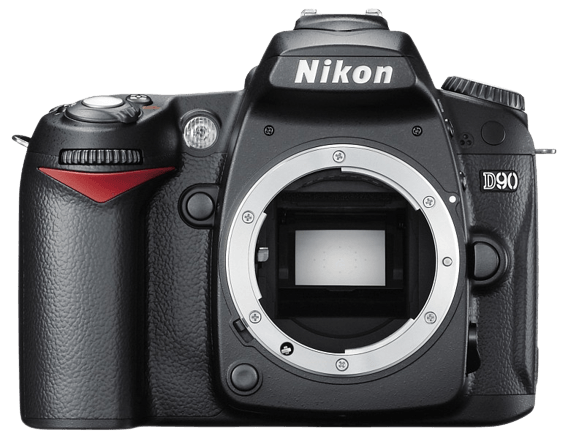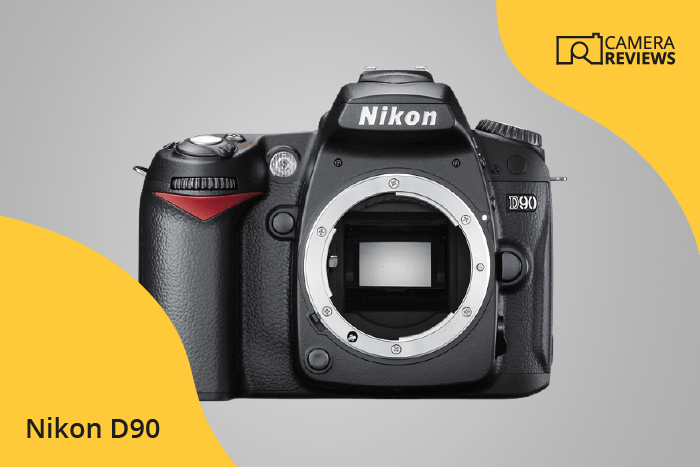Nikon D90 Specs and Scores

The Nikon D90 earns a score of 44/100, reflecting its general specifications. Launched in 2008 with a price of $1235, this DSLR camera measures 132 x 103 x 77mm and weighs 703g (1.55lbs). While the D90’s specifications may have been competitive in its release year, they struggle to stand out in today’s market.
Despite its age, the Nikon D90 remains a reliable option for some photography enthusiasts. However, the camera’s specifications may not satisfy the needs of modern photographers seeking advanced features and capabilities.
Nikon D90 Overview and Optics
The Nikon D90 receives an optics score of 46/100. With 12.3 megapixels and a shooting speed of 4.5 frames per second, it is equipped with a CMOS sensor and an Expeed processor. The DXOMARK sensor score stands at 73, which is relatively low compared to today’s market standards.
This camera has an APS-C sensor size and uses the Nikon F DX lens mount. However, it lacks image stabilization, which can be a drawback for some users. The aspect ratio of the Nikon D90 is 3:2, which is standard for most DSLR cameras.
Considering the current market, the Nikon D90 falls behind in terms of optics specifications. While it may have been competitive during its release, it now struggles to keep up with the advancements in camera technology.
Nikon D90 Video Performance
Nikon D90 Features and Benefits
The Nikon D90’s feature score stands at 41/100. The camera has a 3-inch screen with a resolution of 920,000 dots. However, it lacks modern features such as a touchscreen, flip screen, GPS, WIFI, and Bluetooth connectivity.
In today’s market, the D90’s specifications may not meet the expectations of some users who desire advanced features and seamless integration with their smartphones and other devices. The absence of a touchscreen and flip screen can limit the ease of use and versatility for various shooting scenarios. Additionally, the lack of GPS, WIFI, and Bluetooth restricts location tagging and wireless transfer of images.
Despite these limitations, the Nikon D90 still delivers solid performance and image quality. Potential buyers should consider their specific needs and priorities when deciding on a camera.
Nikon D90 Storage and Battery
The Nikon D90’s storage and battery receive a score of 37/100. This camera has one memory card slot that accepts SD and SDHC cards. In today’s market, having a single memory card slot may be limiting for photographers who require ample storage space or prefer the security of having a backup card.
The D90 has a battery life of 850 shots, powered by an EN-EL3e battery. While this number of shots per charge is decent, it falls short compared to some modern cameras that offer longer-lasting batteries. The Nikon D90 does not support USB charging, which can be an inconvenience for on-the-go photographers who want to recharge their camera using portable power sources.
The storage and battery specifications of the Nikon D90 are modest and may not meet the needs of photographers in the current market, who demand more advanced features and longer battery life.
Nikon D90 Alternatives
Do you want to know how the Nikon D90 compares to its competitors? Have a look at the most popular comparisons for this camera below:
- Nikon D7200 vs D90
- Nikon D850 vs D90
- Nikon D7000 vs D90
- Nikon D5600 vs D90
- Nikon D80 vs D90
- Canon EOS 90D vs Nikon D90
Nikon D90 FAQ
Does the Nikon D90 Have Built-in Image Stabilization?
The Nikon D90 does not have built-in image stabilization. However, it is compatible with Nikon lenses that feature Vibration Reduction (VR) technology, which provides image stabilization.
Does the Nikon D90 Support 4K Video Recording?
The Nikon D90 does not support 4K video recording. It is capable of recording 720p HD video at 24 frames per second, but not 4K resolution.
What Size Sensor Does The Nikon D90 Have?
The Nikon D90 is equipped with an APS-C sized sensor, specifically a 23.6 x 15.8mm CMOS sensor with 12.3 effective megapixels.
Does the Nikon D90 Have a Dual Memory Card Slot?
The Nikon D90 features a single memory card slot, which supports SD, SDHC, and SDXC memory cards.
Does the Nikon D90 Have a Touch Screen?
No, the Nikon D90 does not have a touch screen. It has a 3-inch fixed LCD screen with 920,000 dots for image review and menu navigation.
Does the Nikon D90 Have Wi-Fi and Bluetooth?
The Nikon D90 does not have built-in Wi-Fi or Bluetooth connectivity. However, you can use an optional wireless transmitter for remote control and image transfer.
Does the Nikon D90 Have GPS?
No, the Nikon D90 does not have built-in GPS functionality. You can use an optional GPS adapter for geotagging your images.
Is the Nikon D90 Weather Sealed?
The Nikon D90 is not fully weather-sealed, but it does have a durable construction with some weather resistance to protect against minor moisture and dust.
Does the Nikon D90 Have a Built-in Flash?
Yes, the Nikon D90 has a built-in pop-up flash with a guide number of 17 meters (56 feet) at ISO 200, useful for fill flash and low-light situations.

